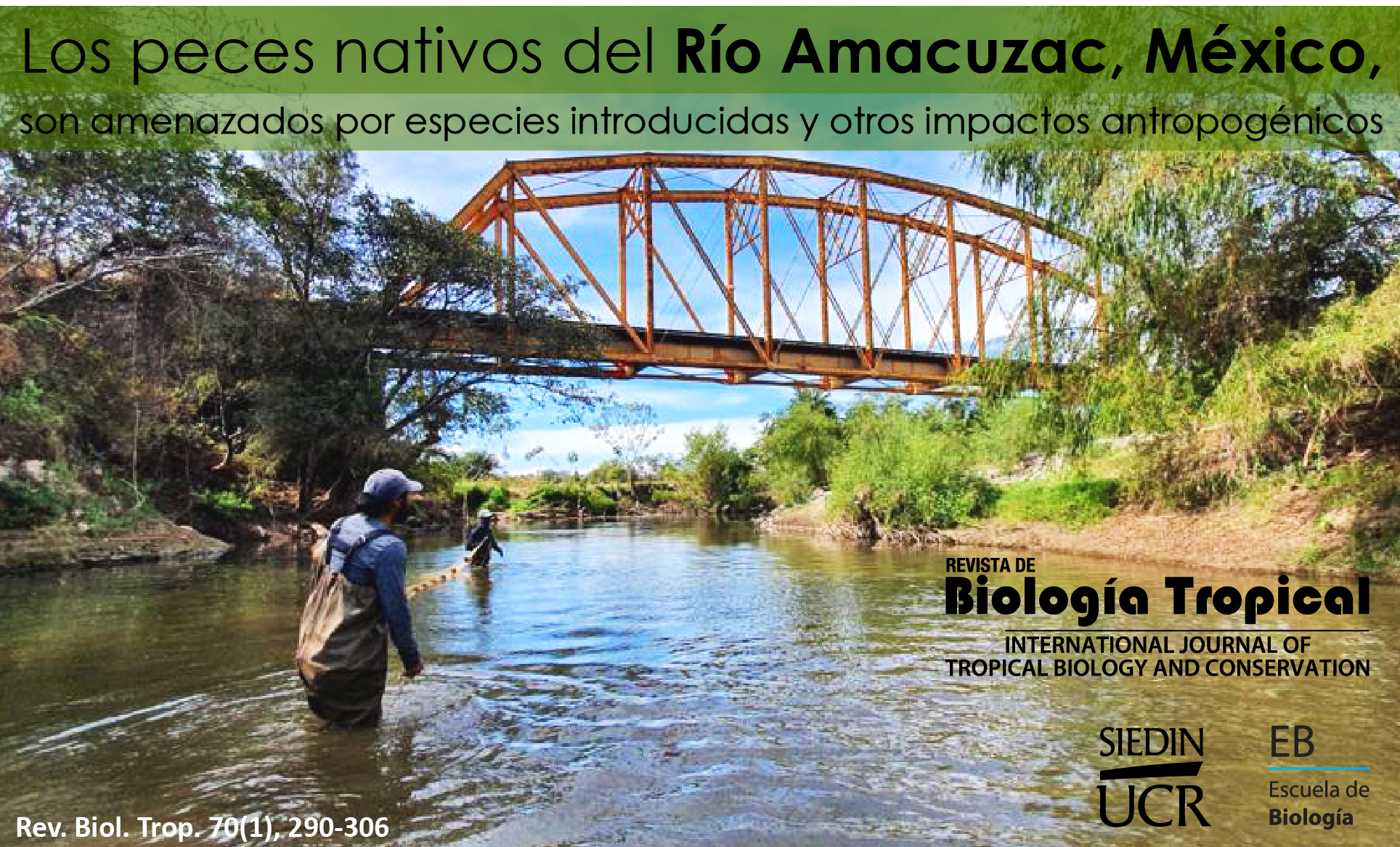Abstract
Introduction: The diversity of a biological community is the result of ecological and historical processes, which, analyzed jointly, produce a better understanding of the causes that generate it. Objective: We update and analyze the specific and taxonomic diversity of the ichthyofauna of the Amacuzac River, Mexico. Methods: During five sampling seasons (2019-2020) we collected fish from ten sites in the river and applied a cluster analysis to habitat variables. Results: We collected 7 638 individuals, seven were native species and nine were non-native, including Copadichromis borleyi, a new record for the Amacuzac. Richness per site ranged from eight to 13 species. Habitat variables defined four groups. The most abundant species were Poeciliopsis gracilis, Poecilia maylandi and Amatitlania nigrofasciata. The least abundant species were: Pterygoplichtys pardalis, Ilyodon whitei, Copadichromis borleyi and Ictalurus punctatus. The most prevalent species were: A. nigrofasciata, Amphilophus istlanus, Andinoacara rivulatus, Notropis boucardi, Oreochormis sp., P. maylandi, P., gracilis and Thorichthys maculipinis. The most restricted species were: Atherinella balsana, C. borleyi and I. punctatus. Conclusions: An extinction endangered species such as A. istlanus and N. boucardi are still prevalent in the river, and an increase in the number of non-native species is shown. Analyzing the diversity from two perspectives provides a more complete view of the changes taking place on the Amacuzac River as a consequence of species establishment, information that is important for future conservation strategies.
##plugins.facebook.comentarios##

This work is licensed under a Creative Commons Attribution 4.0 International License.
Copyright (c) 2022 Revista de Biología Tropical







